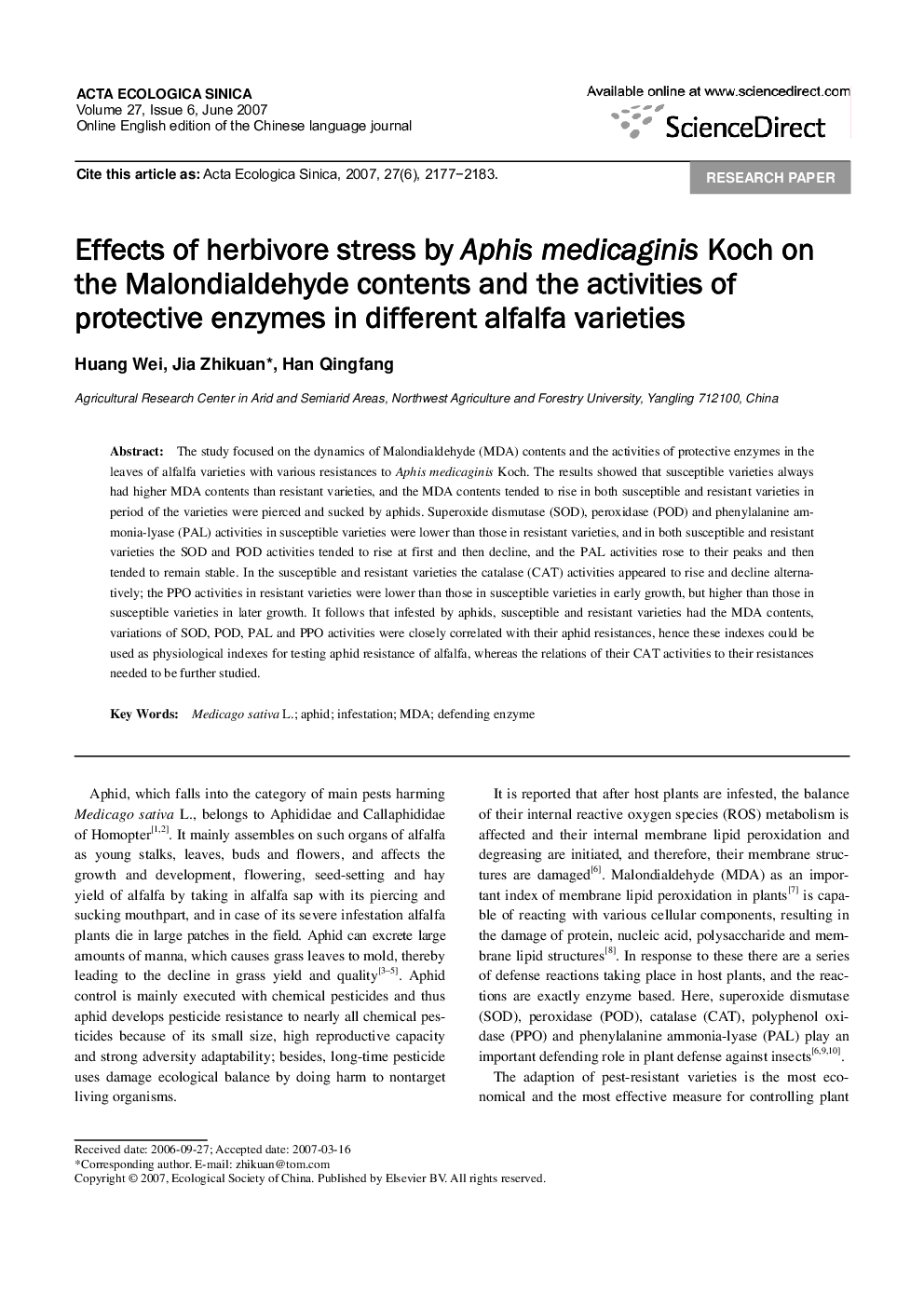| Article ID | Journal | Published Year | Pages | File Type |
|---|---|---|---|---|
| 4380490 | Acta Ecologica Sinica | 2007 | 7 Pages |
The study focused on the dynamics of Malondialdehyde (MDA) contents and the activities of protective enzymes in the leaves of alfalfa varieties with various resistances to Aphis medicaginis Koch. The results showed that susceptible varieties always had higher MDA contents than resistant varieties, and the MDA contents tended to rise in both susceptible and resistant varieties in period of the varieties were pierced and sucked by aphids. Superoxide dismutase (SOD), peroxidase (POD) and phenylalanine ammonia-lyase (PAL) activities in susceptible varieties were lower than those in resistant varieties, and in both susceptible and resistant varieties the SOD and POD activities tended to rise at first and then decline, and the PAL activities rose to their peaks and then tended to remain stable. In the susceptible and resistant varieties the catalase (CAT) activities appeared to rise and decline alternatively; the PPO activities in resistant varieties were lower than those in susceptible varieties in early growth, but higher than those in susceptible varieties in later growth. It follows that infested by aphids, susceptible and resistant varieties had the MDA contents, variations of SOD, POD, PAL and PPO activities were closely correlated with their aphid resistances, hence these indexes could be used as physiological indexes for testing aphid resistance of alfalfa, whereas the relations of their CAT activities to their resistances needed to be further studied.
